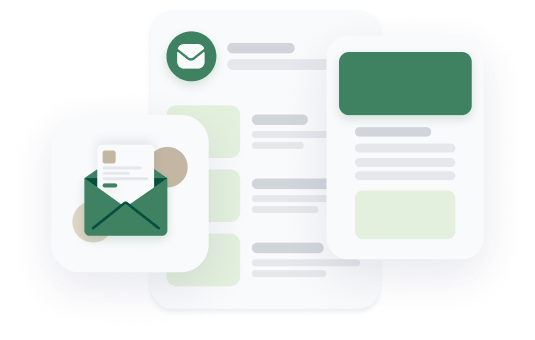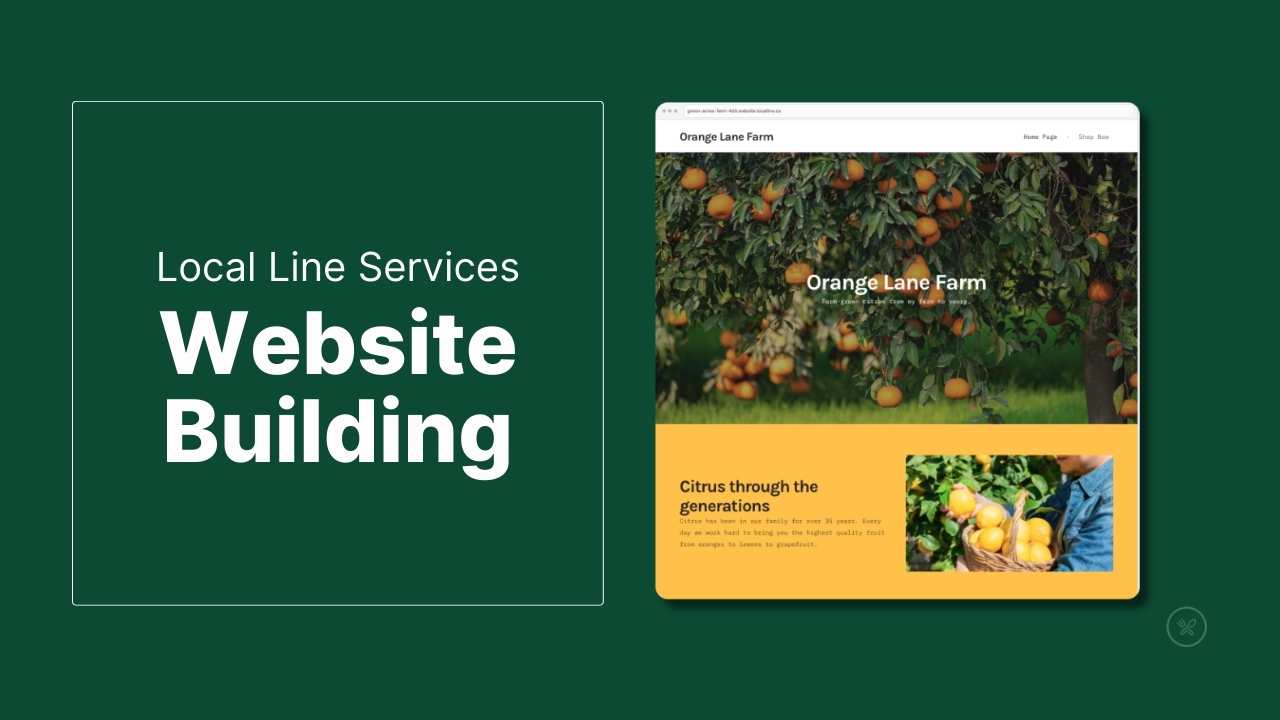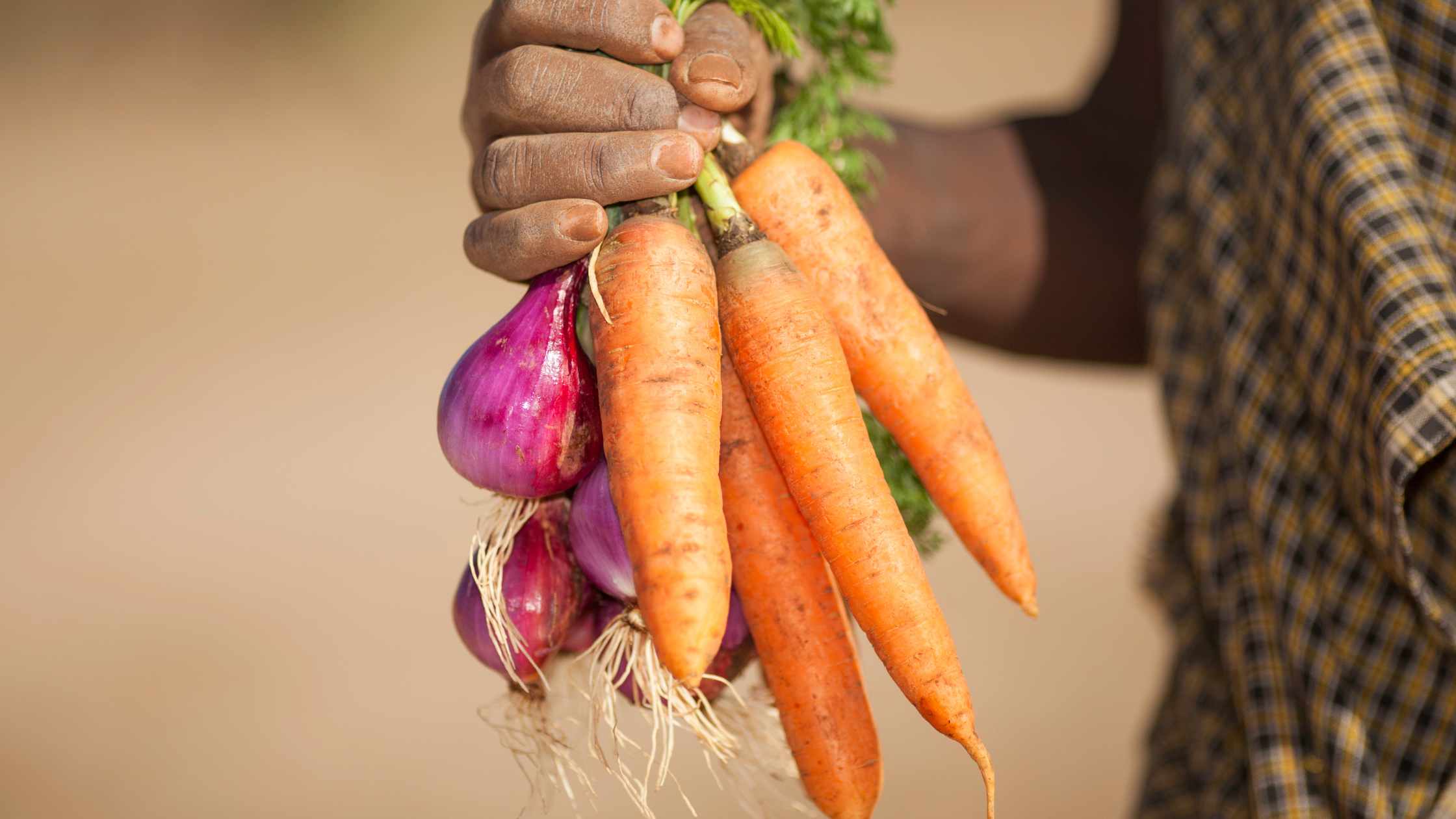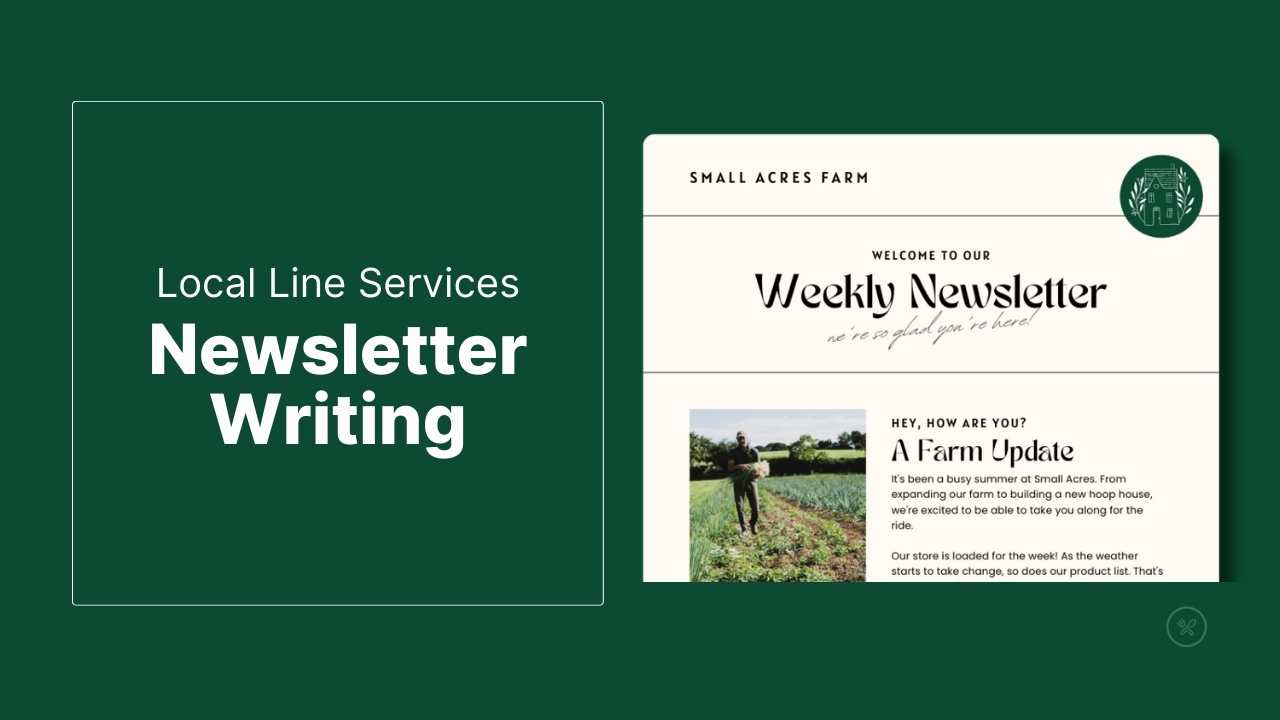Boost Your Farm's Online Presence with Local Line's Website Building Service
Having a well-optimized website is crucial for enhancing your farm's brand visibility and driving...

Creating a farm website is one of the fastest and most cost-effective ways to increase your visibility and increase your sales. A well-crafted website will turn brand awareness into sales by showcasing your products, enhancing overall searchability, and directing visitors to purchase from you.
Building a website from scratch might sound like a daunting task – but with the tools available today, anyone with a plan can create a great website. In this guide, we will walk you through the essential steps to build a high-converting farm website in 2024.
Before diving into the website-building process, you want to define the main purpose of your website. For example, the primary purpose of your website could be to sell more produce online, educate customers about sustainable farming practices, or share your farm's story. The goal of your website will inform tons of important designs you make along the way, such as the messaging, the navigation, and which themes or templates will work best for your site.
Next, you want to define who you’re trying to reach with your website. Who is your ideal customer or target audience? Are they individuals seeking organic foods, families interested in joining a local CSA, or restaurants sourcing grass-fed beef and GMO-free products? For example, your ideal customers could be busy families looking to purchase meat conveniently and easily from local farmers. Once you determine your target audience, ask yourself:
Different audiences will be looking for different things. It’s crucial to address the distinct needs and values of different family types on your website.
For the busy family, convenience is key. These families are looking for ways to integrate quality food choices into their fast-paced lifestyle. Highlighting flexible delivery and pick-up options, such as those offered by farm eCommerce platforms like Local Line, on your website can greatly appeal to them, demonstrating how your farm's offerings can fit seamlessly into their schedule.
On the other hand, there’s the environmentally conscious family, deeply invested in all-natural, animal welfare, and locally sourced products. For these families, the ethical and environmental aspects of food production are top of mind. They are more likely to be drawn to content that details your farm's sustainable practices, showcases your commitment to animal welfare, and emphasizes the local nature of your products. This could include imagery and stories that reflect these values, such as photos of your free-range animals, details of your natural farming methods, or stories about your involvement in the local community.
Having a clear goal and audience before designing your website will allow you to create a website that does the selling for you and will make deciding the structure of your website much easier!
Your website structure is essentially how your website is built, i.e., what sections go where and which pages you include. It defines how your customers navigate your website. A well-organized website ensures a seamless user experience, which in turn increases your website’s ability to convert visitors into customers.
Homepage: The page your visitors land on when they visit your website. Your home page should effectively communicate who you are, what you sell, and how they can buy.
About Us: This is your opportunity to share a bit more about your farm, how you got started, the history of the land, and more. Because we are selling food online, you want to dedicate the time to putting a face to the name. This will help to build trust with your prospects and help convince them to shop from you – especially if you don’t have the chance to chat with prospects as you would at the farmers’ market, for example.
How to Shop: Every farm or food hub might have a slightly different ordering process. For example, you might have online store hours (i.e., ordering is open Mondays to Thursdays), delivery cut-off times, order pick up protocols, CSA-member instructions, etc. You want to provide a dedicated page to outline how this all works, so that when they land on your e-commerce store, they’re well-equipped to shop from you.
Quick tip: Don’t forget to add a button to your online store on this page!
Check out this great example of a “How to Shop” page by Spray Creek Ranch.
FAQ Page: If you notice you’re getting many of the same questions from your audience, dedicate a page to this on your website. For example, if you sell bulk options for meat, you could add:
Policy Pages: Ensure you’re keeping up to date with which policy pages to include on your website, such as a return or shipping policy.
In addition to these pages, you could also consider adding a blog, a separate Contact Us page, or a testimonials page.
Think of your domain name as your digital business name – it’s how people can find you online. Not only is your domain name the URL of your website, but you can also use it as your email address.
When picking your domain name, you want to pick something that resonates with your brand the most, i.e., your farm name or business name. If your business name is already taken, consider adding a variation of your business name and your location. For example, if your farm name is Happy Acres but happyacres.com is taken, consider happyacresnj.com, as a nod to your home state New Jersey.
Additionally, consider the geographical scope of your business when selecting your domain extension. If you are a Canadian farm primarily selling to Canadian customers, a .CA domain might be more appropriate, signaling your local presence. On the other hand, if you are based in the US or aim to reach an international audience, a .com domain could be a better fit. This helps set the right expectations and can influence local search engine results, making it easier for your target audience to find and identify with your brand online. For instance, we at Local Line chose localline.ca as our domain to reflect our origins as a business that started in Canada.
Next, you’ll want to pick the best website builder. Depending on your website needs, design, and previous experience building a website, you might be looking for something different in a builder.
Most website builders today are “drag and drop” or “no-code”, where you can select a template and fill your copy, colours, fonts, and images to make it your own. Each template will come with pre-built modules (common website sections that are used like building blocks to create pages), so you can re-arrange your page to share information in your desired order.
If you know HTML and CSS, many website builders will also allow you to modify existing modules or create your own.
At Local Line, we also offer an affordable, easy-to-use farm website builder. Choose from pre-defined farm website templates, add your own domain, and the best part is you can access your website tool inside your Local Line account. One login for everything!
Now, it’s time to design your farm website. The more visual appeal your has – the better. Using high-quality imagery and video, preferably your own, rather than relying solely on stock farm photos, will help draw visitors to your site and continue to scroll. When designing your website, think, “I have 10 seconds to convince someone to stay on my site: how will I do this?”.
Next, when building your site, refer back to your website structure:
You also want to dedicate some time to designing a website theme. If you already have a brand kit or branding guide, you’ll want to pull the fonts, colours, messaging, and brand imagery from your brand guide. The farm website should succinctly match your other brand assets, such as your logo, social media, and print material. If you’re using Local Line to build your farm website, you can choose from several free farm website templates to get started.
If you need support creating a custom brand, Local Line has a logo and brand service for farms. In our package, you’ll receive:
Because your website is not only a marketing tool but predominantly a sales tool – you want to showcase your products and services upfront. Leverage your website to showcase your products, production methods, how to order from you, and any other services you offer, such as farm tours, summer camps, workshops, etc.
Be sure to learn how to take high-quality farms and produce images showcasing your products and brand. You want to reflect your brand, quality, and story. More importantly, you want your website to do the talking for you. It should be better at selling than your best salesperson at the market.
Next, you’ll want to integrate your e-commerce storefront within your website so visitors can easily navigate to shop from you.
To start, what is SEO? In simple terms, Search Engine Optimization (SEO) is how your website gets ranked on a search engine, such as Google or Bing. Search engines look for different elements in your website that make it more or less trustworthy as the answer to what is being searched. For example, if someone searched “local farms near me”, the search engine would try to find the most relevant websites to show first.
In short, SEO helps you get discovered online, which helps get more eyes on your website and (hopefully) more sales in the long run.
Here are a few SEO tips to help agriculture and food websites rank on Google:
Implementing these SEO best practices can help improve your farm website's visibility in search engine results, attracting more potential customers to your site.
Regular website maintenance and updating are vital for user experience and SEO. Ensuring your content, messaging, and contact information are current is essential for keeping your audience engaged and informed. Here's how you can effectively manage this:
By following these practices, you can keep your website a dynamic and engaging representation of your farm, ensuring it continues to serve your business and community effectively.
Let’s recap the steps to build a successful farm website:
Costs vary based on domain registration, hosting, and additional features. Local Line offers transparent pricing for building a website and ecommerce store with our platform. Build your farm website using Local Line for only $9/month!
This is dependent on your time, previous skill, and what you’re hoping to achieve. If you have some experience building websites and have the time to dedicate to it, Local Line's user-friendly website builder for farmers makes creating websites easy. However, if not, Local Line also offers professional farm website design services for those seeking a more customized approach.
The timeline depends on factors like complexity and content. With Local Line's website builder, farmers can quickly create a site within 30 minutes, while more intricate designs with custom modules may take longer. This depends entirely on your skill set and what you hope to build.
Utilize social media, newsletters, and SEO strategies. Anywhere you promote your business, you should also be linking to your website.
Nina Galle is the co-author of Ready Farmer One. She continues to arm farmers with the tools, knowledge, and community they need to sell online at Local Line.

Stay in the loop by subscribing to our newsletter and receive weekly insights that you won't want to miss.

Having a well-optimized website is crucial for enhancing your farm's brand visibility and driving...
 Nina Galle
Nina Galle

New year, new farm website (or at least it's due for some updates). In this age of screens and...
 Nina Galle
Nina Galle

Email marketing is a potent tool, and a well-crafted newsletter is your secret ingredient for...
 Nina Galle
Nina Galle